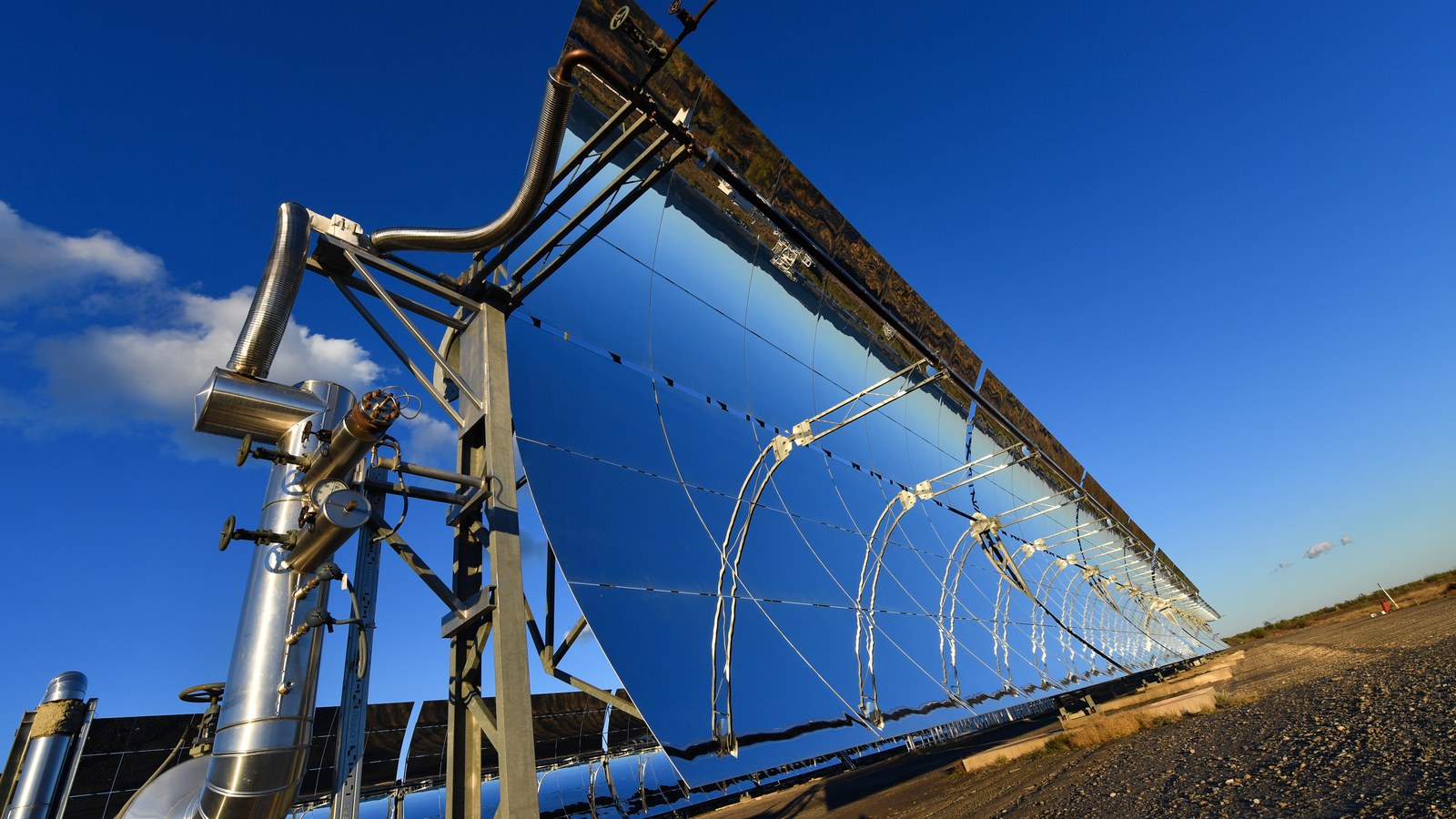SITEF & SIMON

Silicone oils as heat transfer media
Duration: SITEF 1.1.2016 – 31.7.2017, SIMON 1.11.2017 – 31.10.2019
Solar thermal power plants play a very important role in the energy transition in sunny regions of the world, as in combination with a heat storage system they can also deliver electricity after sunset. The efficiency of solar parabolic trough power plants is largely determined by the efficiency of the solar field. Better utilization of the incident solar radiation is possible, for example with a higher maximum temperature of the heat transfer oil, which circulates in the absorber tubes and absorbs the solar radiation. A consortium of research and industry led by the German Aerospace Center (DLR) has demonstrated the suitability of silicone-based heat transfer oils as part of various funding projects.
In the two international research projects SITEF (Silicon Fluid Test Facility) and SIMON (Silicon Fluid Maintenance and Operation), the practical suitability of two new silicone oils from Wacker Chemie AG (WACKER), HELISOL® 5A and HELISOL® XA, at temperatures of up to 450 Degrees Celsius was demonstrated. Both projects were funded by the Federal Ministry for Economic Affairs and Energy through SOLAR-ERA.NET.
HELISOL® silicon-based heat transfer media enable significant cost savings in solar thermal power generation in parabolic trough systems compared to the state of the art or the eutectic mixture of biphenyl and diphenyl ether (BP/DPO). These cost savings result from the higher maximum operating temperature of 425 degrees Celsius, a freezing point below -40 degrees Celsius as well as from a significantly improved environmental compatibility.
In SITEF, the PROMETEO test system on the Plataforma Solar de Almería (PSA) in southern Spain (owned by the Spanish Research Facility CIEMAT) was first converted into an existing system for solar demonstration operation with silicone oils at up to 450 degrees Celsius. For this purpose, the receiver pipes and flexible pipe connections (REPA, Rotation and Expansion Performing Assemblies) were developed for the special operating conditions and installed in the PROMETEO test facility of Plataforma Solar de Almería of the Spanish research center CIEMAT. The system then ran a total of 1,100 hours in solar mode, including 480 hours at 425 degrees Celsius. The HELISOL® 5A oil thus successfully passed the suitability test, the so-called "Proof of Concept".
In the SIMON project, the PROMETEO test system prepared in the SITEF project continued to be operated. In addition to the realistic testing of a second improved silicone oil with the name HELISOL® XA, the SIMON project focus was on demonstrating operational safety as well as developing and demonstrating an "oil maintenance" facility. The latter is necessary because even very temperature-resistant heat transfer oils form small amounts of decomposition products over the course of many thousands of hours of operation, which must be selectively removed from the system. As part of a release test specially developed by WACKER, DLR, TÜV Nord and CIEMAT, the bursting of a pipeline was simulated as proof of operational safety. The leakage was simulated by a valve that opened very quickly. The heat transfer oil at 420 degrees Celsius flowed out without igniting.
The techno-economic competitiveness of a silicone oil-based reference power plant was examined by the plant construction company TSK Flagsol as part of a detailed engineering.
Projects | SITEF & SIMON |
|---|---|
Duration | SITEF: 1.1.2016 – 31.7.2017 SIMON: 1.11.2017 – 31.10.2019 |
Project participants |
|
Funding | SOLAR-ERA.NET |

